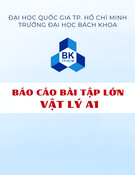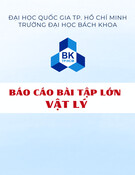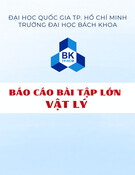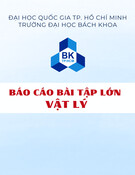
TRƢỜNG ĐẠI HỌC SƢ PHẠM HÀ NỘI 2
KHOA VẬT LÝ
NGUYỄN TRƢỜNG GIANG
SỬ DỤNG TIẾNG ANH CHO VẬT LÝ
CHO PHÂN DẠNG BÀI TẬP PHẦN
CƠ HỌC VẬT RẮN
KHÓA LUẬN TỐT NGHIỆP ĐẠI HỌC
Chuyên ngành: Vật lý đại cƣơng
HÀ NỘI,2018

TRƢỜNG ĐẠI HỌC SƢ PHẠM HÀ NỘI 2
KHOA VẬT LÝ
NGUYỄN TRƢỜNG GIANG
SỬ DỤNG TIẾNG ANH CHO VẬT LÝ
CHO PHÂN DẠNG BÀI TẬP PHẦN
CƠ HỌC VẬT RẮN
KHÓA LUẬN TỐT NGHIỆP ĐẠI HỌC
Chuyên ngành: Vật lý đại cƣơng
Ngƣời hƣớng dẫn khoa học:
GV.ThS Hoàng Văn Quyết
HÀ NỘI, 2018

LỜI CẢM ƠN
Để hoàn thành đề tài khóa luận và kết thúc khóa học, với tình cảm chân
thành, tôi xin bày tỏ lòng biết ơn sâu sắc tới trường Đại học Sư phạm Hà Nội 2
đã tạo điều kiện cho tôi có môi trường học tập tốt trong suốt thời gian tôi học
tập, nghiên cứu tại trường.
Tôi xin gửi lời cảm ơn tới Thầy Hoàng Văn Quyết đã giúp đỡ tôi trong
suốt quá trình nghiên cứu và trực tiếp hướng dẫn tôi hoàn thành đề tài luận văn
tốt nghiệp này. Đồng thời, tôi xin bày tỏ lòng cảm ơn tới thầy cô trong Khoa
Vật lí, bạn bè đã giúp đỡ, tạo điều kiện cho em trong suốt quá trình học tập và
hoàn thành Khóa luận tốt nghiệp lần này.
Xuân Hòa, ngày 9 tháng 5 năm 2018
Sinh viên
Nguyễn Trƣờng Giang

LỜI CAM ĐOAN
Dưới sự hướng dẫn của Ths. Hoàng Văn Quyết khóa luận tốt nghiệp
chuyên ngành Vật lí đại cương với đề tài “SỬ DỤNG TIẾNG ANH CHO
VẬT LÝ CHO PHÂN DẠNG BÀI TẬP PHẦN CƠ HỌC VẬT RẮN” được
hoàn thành bởi chính sự nhận thức của bản thân, không trùng với bất cứ khóa
luận nào khác.
Trong khi nghiên cứu khóa luận, tôi đã kế thừa những thành tựu
của các nhà khoa học với sự trân trọng và biết ơn.
Xuân Hòa, ngày 9 tháng 5 năm 2018
Sinh viên
Nguyễn Trƣờng Giang

MỤC LỤC
MỞ ĐẦU ............................................................................................................ 1
1. Lý do chọn đề tài: ......................................................................................... 1
2. Mục đích nghiên cứu đề tài:.......................................................................... 2
3. Đối tượng và phạm vi nghiên cứu: ............................................................... 2
4. Nhiệm vụ nghiên cứu: ................................................................................... 2
5. Phương pháp nghiên cứu: ............................................................................. 2
6. Cấu trúc khóa luận. ....................................................................................... 2
CHƢƠNG 1: CƠ SỞ LÝ THUYẾT ................................................................ 3
1. Mô men quán tính. Định lí Huy ghen – stennơ:.............................................. 3
2. Chuyển động của vật rắn ................................................................................. 4
3. Mô men lực. Điều kiện cân bằng của vật rắn.................................................. 6
4. Mô men động lượng. Định luật bảo toàn và biến thiên mô men động lượng . 9
5. Động năng của vật rắn ................................................................................... 11
CHƢƠNG 2: PHÂN DẠNG BÀI TẬP CƠ HỌC VẬT RẮN ..................... 14
2.1. The problem of finding the center of the solid .......................................... 14
2.2. Balance problem of solids .......................................................................... 17
2.3. The problem using the dynamic method .................................................... 25
2.4. The problem uses conservation law and momentum moment variation ... 31
2.5. The problem uses conservation law and mechanical energy variation ...... 37
KẾT LUẬN ...................................................................................................... 45


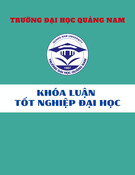
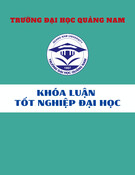
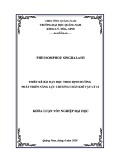
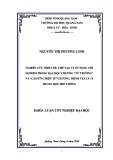

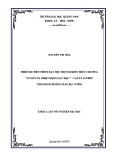
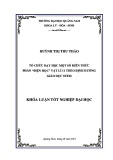
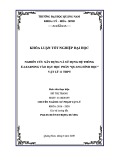

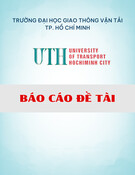


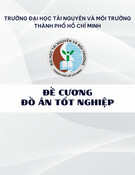
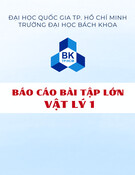
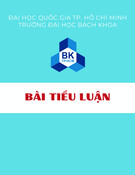
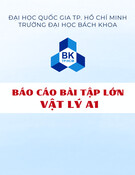


![Tính toán thiết bị trao đổi nhiệt ống chùm thẳng đứng: Bài tập lớn [chuẩn nhất]](https://cdn.tailieu.vn/images/document/thumbnail/2025/20250805/kimphuong1001/135x160/93311754362991.jpg)
